Cycling is all about efficiency, speed, and comfort, and one of the best ways to enhance all three is by upgrading to aero bars. Whether you're a competitive triathlete, a long-distance rider, or simply looking to improve your performance, aero bars can transform your cycling experience.
Trifoxbike.com offers a range of high-quality carbon bike handlebars, including aero bars, designed to help you ride faster and smarter. Here’s why you should consider making the switch.
What Are Aero Bars?
Aero bars, or triathlon bars, are handlebar extensions that allow riders to adopt a more aerodynamic position. By positioning your arms closer together and lowering your torso, aero bars reduce wind resistance, which is one of the biggest obstacles to speed. This streamlined posture can significantly improve your efficiency, especially during long rides or races.
Benefits of Aero Bars
1. Increased Speed: The primary advantage of aero bars is their ability to cut through the wind. By reducing drag, you can maintain higher speeds with less effort, making them a game-changer for time trials and triathlons.
2. Improved Comfort: Aero bars provide an additional hand position, reducing strain on your wrists, shoulders, and back during long rides. This can help prevent fatigue and keep you riding longer.
3. Better Power Transfer: The forward-leaning position engages your core muscles, allowing for more efficient power transfer from your legs to the pedals.
Why Choose Carbon Aero Bars?
Carbon fiber aero bars, like those available at Trifoxbike.com, offer the perfect balance of strength, stiffness, and lightweight performance. Carbon’s natural vibration-dampening properties also enhance comfort, making it an ideal material for long-distance cycling. Plus, the sleek design of carbon aero bars adds a professional touch to your bike's aesthetics.
If you're ready to take your cycling to the next level, investing in aero bars is a smart move. Visit [Trifoxbike.com]to explore their selection of carbon bike handlebars and find the perfect fit for your ride. With improved speed, comfort, and efficiency, aero bars are the upgrade your cycling experience deserves. Don’t let wind resistance hold you back—embrace the aero advantage today!
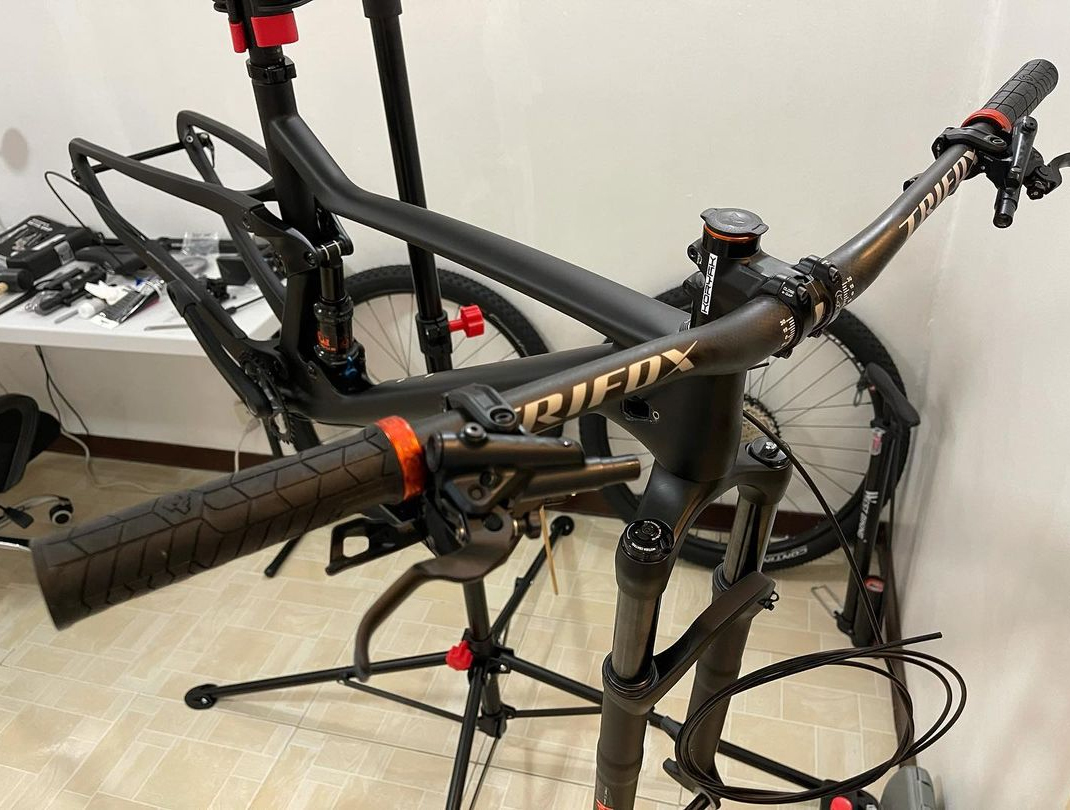

When it comes to cycling, every component of your bike plays a role in your overall experience, but few parts are as critical as the wheels. Bicycle wheels are not just round frames that keep you moving—they are the foundation of your ride, influencing everything from speed and efficiency to comfort and safety. So, are bicycle wheels important? Absolutely. Here’s why.
The Foundation of Motion
Bicycle wheels are the primary point of contact between your bike and the ground. They bear the weight of the rider, absorb shocks from the road, and transfer your pedaling power into forward motion. Without well-functioning wheels, your bike simply wouldn’t move efficiently—or at all. The design, material, and condition of your wheels directly impact how smoothly and quickly you can ride.
Speed and Efficiency
High-quality wheels can significantly improve your bike’s performance. Lightweight wheels, often made from materials like aluminum or carbon fiber, reduce rotational mass, making it easier to accelerate and maintain speed. Aerodynamic wheel designs further enhance efficiency by cutting through the air with minimal resistance. For competitive cyclists, investing in premium wheels can mean the difference between winning and losing a race.
Comfort and Stability
Wheels also play a key role in ride comfort. Larger wheels, such as those found on road bikes or hybrids, roll more smoothly over bumps and cracks, providing a more comfortable experience. The tires mounted on the wheels also contribute to comfort, but the wheel’s ability to maintain its shape and absorb vibrations is equally important. Properly tensioned spokes and a true (straight) wheel ensure stability, reducing wobbling and making the bike easier to control.
Safety and Durability
Your safety on the bike depends heavily on the condition of your wheels. A damaged or improperly maintained wheel can fail unexpectedly, leading to accidents. Regularly checking for issues like loose spokes, cracks, or dents in the rim is essential. Additionally, wheels designed for specific terrains—such as wider, sturdier wheels for mountain biking—provide better traction and durability, reducing the risk of slips or mechanical failures.
Customization and Versatility
Bicycle wheels are highly customizable, allowing riders to tailor their bikes to specific needs. Whether you’re looking for lightweight wheels for racing, robust wheels for off-roading, or puncture-resistant tires for commuting, the right wheels can transform your ride. Swapping out wheels can even change the entire feel of your bike, making it more versatile for different types of cycling.
Bicycle wheels are far more than just circular frames—they are the heart of your bike’s performance. From speed and efficiency to comfort and safety, wheels influence every aspect of your ride. Investing in high-quality wheels and maintaining them properly ensures a smoother, faster, and safer cycling experience. So, the next time you’re out for a ride, take a moment to appreciate your wheels—they’re doing the heavy lifting to keep you moving forward!
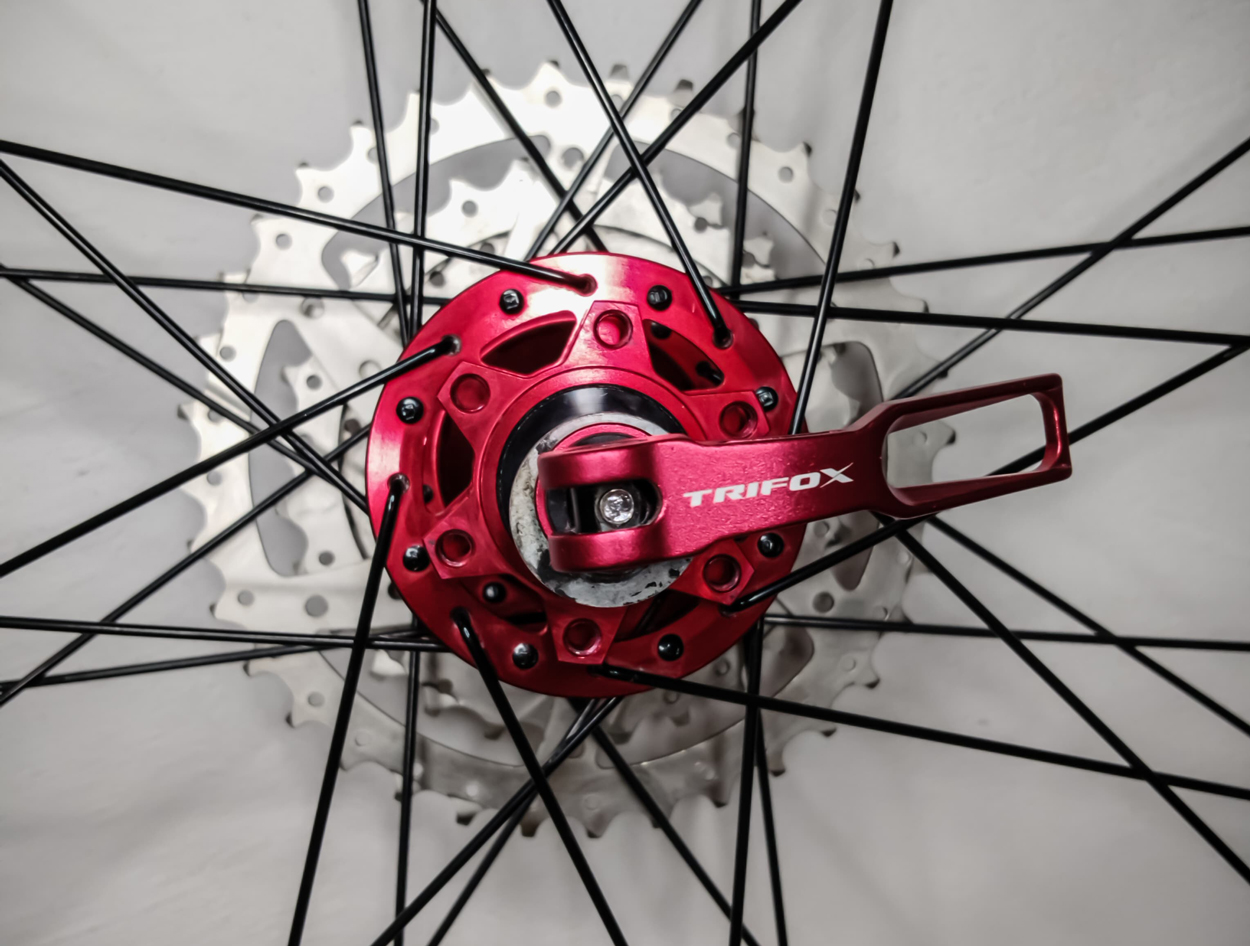
When it comes to cycling, many riders focus on components like the frame, gears, or brakes, often overlooking one of the most critical elements of a bike: the spokes. These slender, often underappreciated parts play a vital role in ensuring a smooth, safe, and efficient ride. Without properly functioning spokes, your bike’s performance would suffer, and your safety could be compromised. Here’s why bike spokes are so crucial to your ride.
The Role of Spokes in Wheel Structure
Spokes are the thin metal rods that connect the hub (the center of the wheel) to the rim. Their primary function is to distribute the weight of the rider and the bike evenly across the wheel. This distribution is essential for maintaining the wheel’s shape and strength, especially when encountering bumps, potholes, or other obstacles. Without spokes, the rim would collapse under pressure, making the bike unrideable.
Spokes also help absorb shocks and vibrations from the road. When you hit a bump, the spokes flex slightly, reducing the impact on the rider and preventing damage to the wheel. This flexibility is key to maintaining a comfortable ride, particularly on rough terrain.
Strength and Durability
A well-built wheel with properly tensioned spokes is incredibly strong. Spokes work together to create a tensioned structure that can withstand significant forces. This is why even lightweight wheels can support heavy loads without buckling. However, if one or more spokes are loose, broken, or improperly tensioned, the wheel becomes unbalanced, leading to wobbling, reduced efficiency, and even potential failure.
Regular maintenance of your spokes is essential to ensure their longevity and performance. Over time, spokes can loosen due to constant stress and vibration. Periodic checks and adjustments by a professional can prevent issues like spoke fatigue or wheel misalignment, which could otherwise lead to costly repairs or accidents.
Impact on Ride Quality
Spokes directly influence the ride quality of your bike. A wheel with evenly tensioned spokes rolls smoothly, reducing friction and improving efficiency. This means you can ride faster and with less effort. On the other hand, a wheel with loose or uneven spokes can cause wobbling, making the bike harder to control and increasing the risk of accidents.
Additionally, spokes contribute to the overall weight of the bike. High-quality spokes made from materials like stainless steel or carbon fiber are lightweight yet strong, enhancing the bike’s performance without compromising durability. For competitive cyclists, every gram counts, and optimizing spoke quality can make a significant difference in speed and agility.
Safety Considerations
Broken or damaged spokes can compromise your safety. A single broken spoke can throw the wheel out of balance, causing it to rub against the brake pads or frame. This not only makes the bike harder to ride but also increases the risk of a sudden wheel failure, which could lead to a crash. Regularly inspecting your spokes for damage and addressing issues promptly is crucial for maintaining a safe ride.
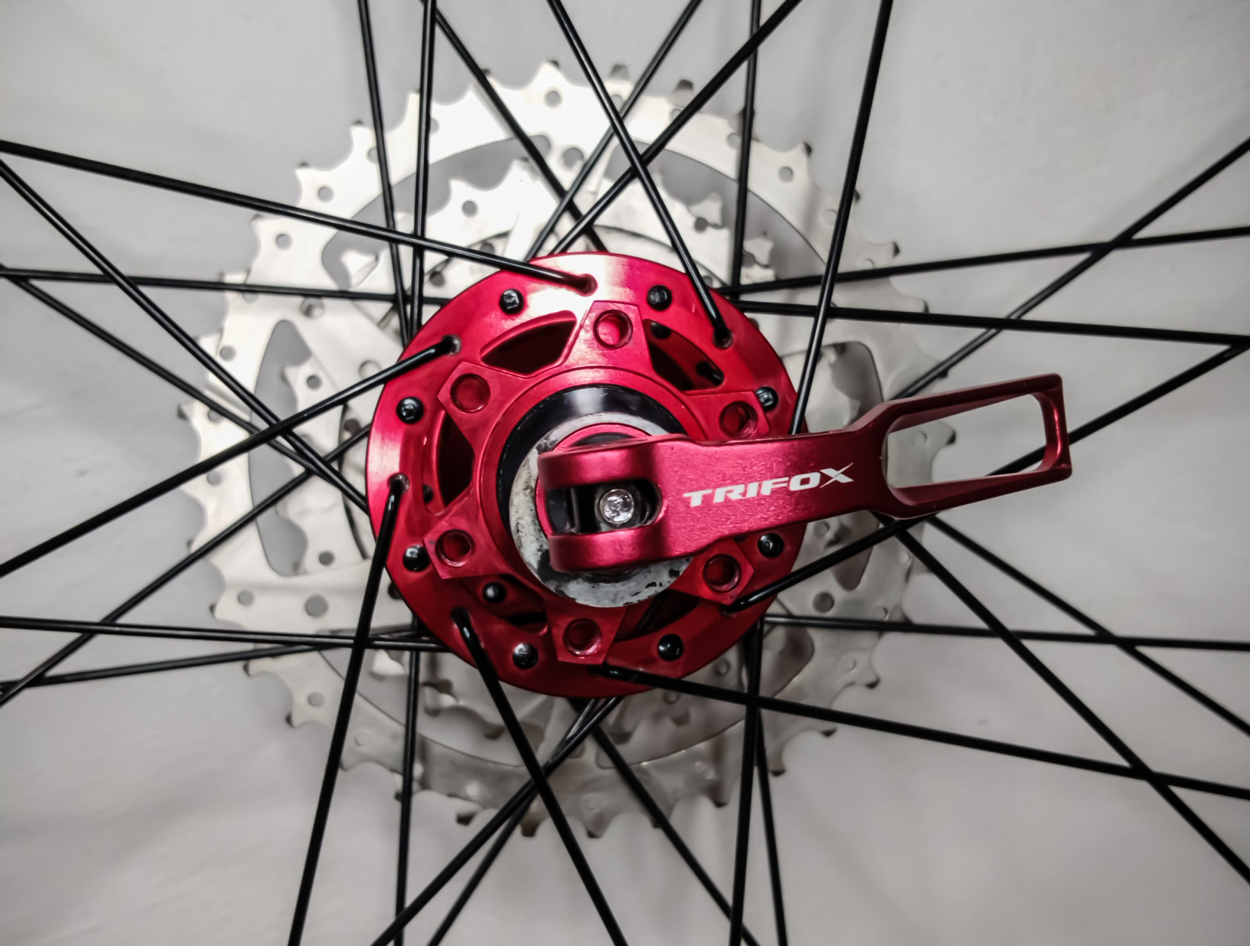
While bike spokes may seem like a small and insignificant part of your bicycle, they are, in fact, fundamental to its performance, durability, and safety. From maintaining the wheel’s structure to absorbing shocks and ensuring a smooth ride, spokes play a critical role in your cycling experience. By paying attention to their condition and ensuring proper maintenance, you can enjoy a safer, more efficient, and more enjoyable ride. So, the next time you hop on your bike, take a moment to appreciate the humble spoke—it’s working hard to keep you rolling!
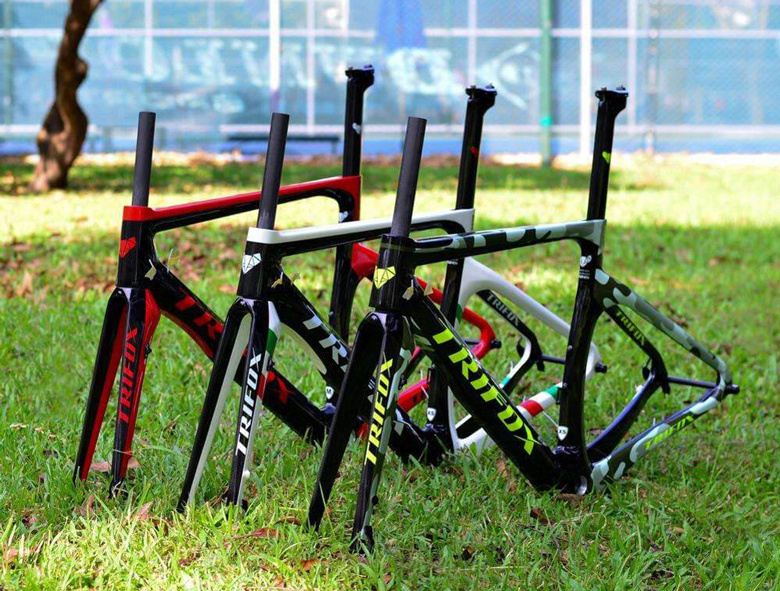
If you're considering diving into the world of road cycling, one of the first questions you’ll likely ask is, “How much does a good road bicycle cost?” The answer isn’t straightforward, as road bikes come in a wide range of prices depending on their components, materials, and intended use. Let’s break down the factors that influence the cost and help you determine what you can expect to pay for a quality road bike.
Entry-Level Road Bikes ($500 - $1,000)
For beginners or casual riders, entry-level road bikes are a great starting point. These bikes typically feature aluminum frames, basic components, and mechanical shifting systems. While they may lack the advanced features of higher-end models, they are reliable, lightweight, and perfect for commuting, fitness riding, or weekend adventures. Brands like Trifox Bike offer affordable options that deliver excellent value for money.
Mid-Range Road Bikes ($1,000 - $3,000)
Mid-range road bikes strike a balance between performance and affordability. These bikes often feature carbon fiber frames, which are lighter and more efficient than aluminum, along with better-quality components like hydraulic disc brakes and mid-tier drivetrains (e.g., Shimano 105 or SRAM Rival). If you’re serious about cycling and want a bike that can handle longer rides, faster speeds, and more varied terrain, this price range is a solid investment.
High-End Road Bikes ($3,000 - $7,000+)
High-end road bikes are designed for performance enthusiasts and competitive cyclists. They boast top-tier carbon frames, advanced aerodynamic designs, and premium components like electronic shifting (e.g., Shimano Dura-Ace or SRAM Red). These bikes are incredibly lightweight, stiff, and responsive, making them ideal for racing or high-intensity training. While the price tag is steep, the performance gains are undeniable.
Custom and Premium Options ($7,000+)
For those seeking the ultimate road bike, custom or premium models offer unparalleled craftsmanship and performance. These bikes often feature bespoke designs, cutting-edge materials, and the latest technological innovations. If you’re a professional rider or simply want the best of the best, this category is worth considering.
Why Choose a Carbon Road Bike?
Carbon fiber is the material of choice for high-performance road bikes due to its lightweight, stiffness, and vibration-damping properties. Trifox Bike offers a range of carbon road bike frames that combine affordability with top-tier performance, making them an excellent option for riders looking to upgrade without breaking the bank.
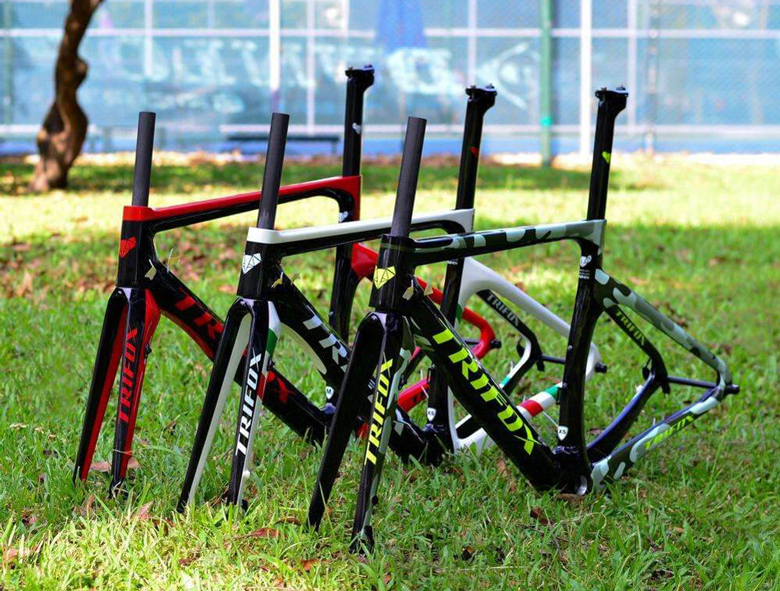
The cost of a good road bicycle depends on your needs, goals, and budget. Entry-level bikes are perfect for beginners, while mid-range and high-end models cater to more experienced riders. If you’re looking for a balance of performance and value, a carbon road bike from Trifox Bike is a fantastic choice. Whether you’re commuting, training, or racing, investing in the right road bike will enhance your riding experience and help you achieve your cycling goals. Happy pedaling!
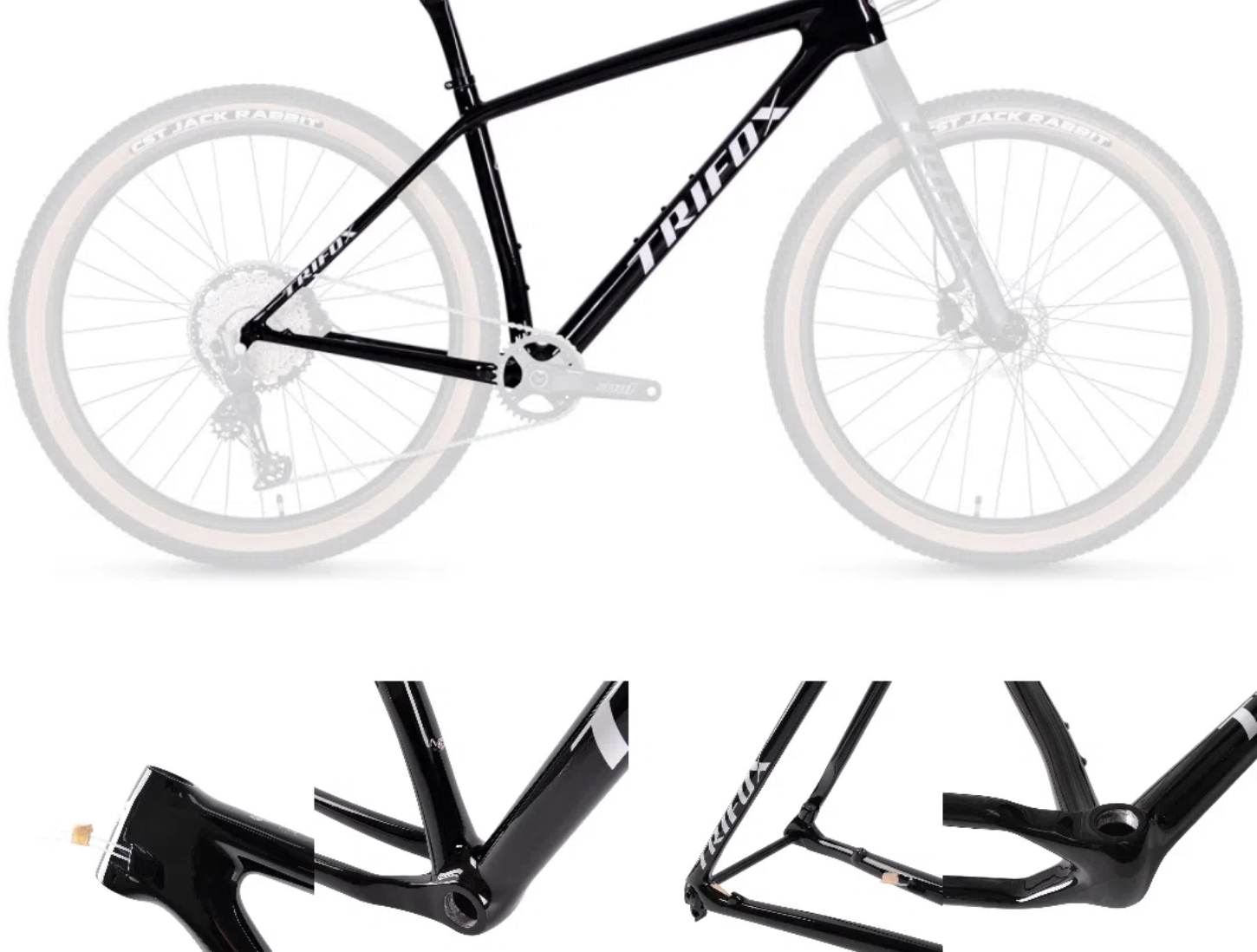
There are endless ways to upgrade and customize a bike. Cool features like carbon fiber wheels, ceramic bearings, and oversized pulley wheels all cost a fortune.
Assuming you've already adjusted your bike to your body size and are happily racking up the miles on your new road or mountain bike, what should be your first upgrade in pursuit of performance?
The simple and correct answer is: tires.
Tires are often overlooked and underestimated as an upgrade. However, tires are the only part of a bike that comes in contact with the ground you ride on. They have a greater impact on the ride quality and performance of a bike than any other part.
This means that upgrading your bike’s original tires can significantly improve its performance, comfort, and safety. The reason for this is that most brands will skimp on tires in order to lower the pricing targets of their models, unless you buy the top-of-the-line bikes.
The good news is that the cheaper your bike is, the greater the potential benefit you'll get from a tire upgrade.
The most obvious way tires can improve performance is by making them lighter.
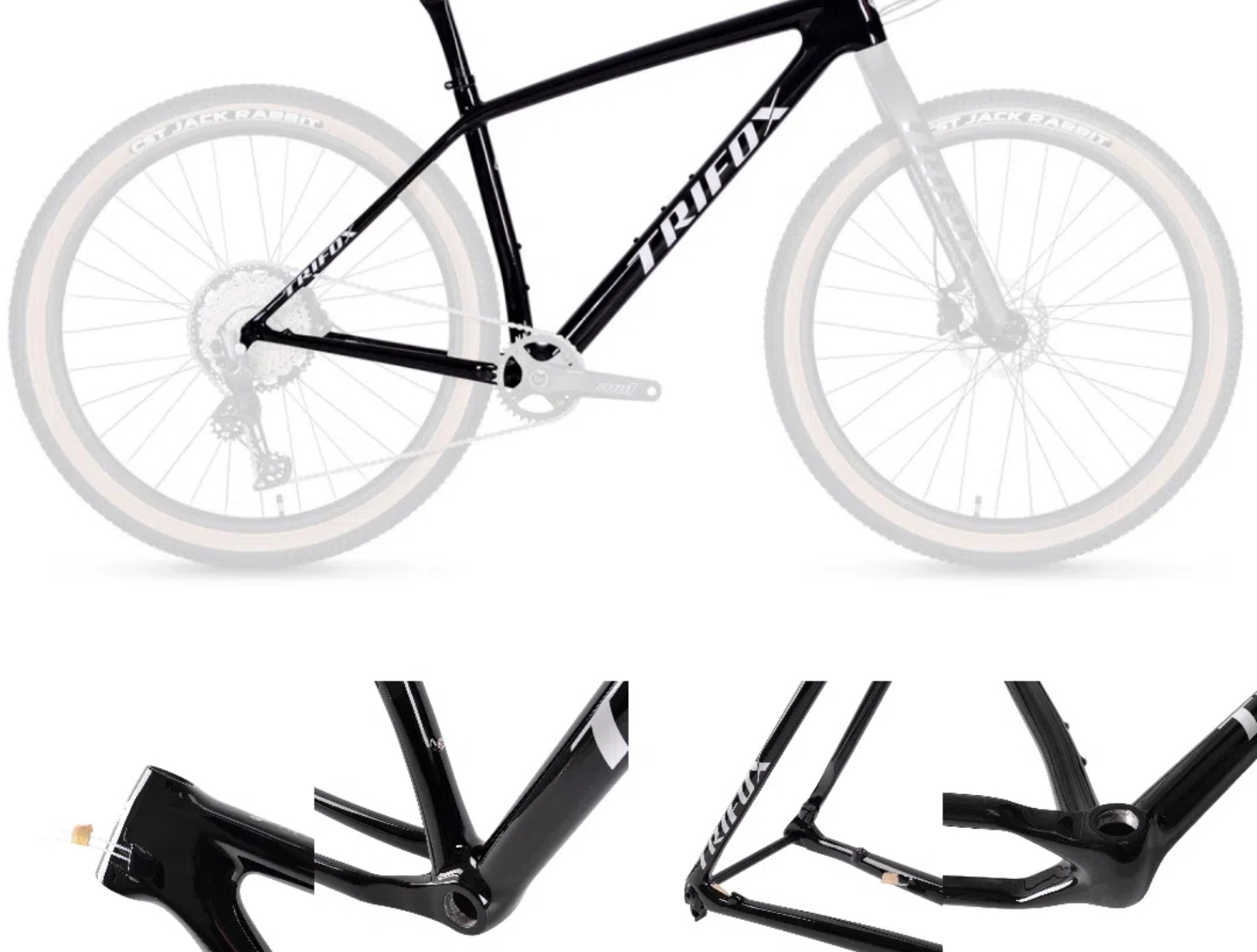
A little more complicated is that better tires improve performance through lower rolling resistance, which comes from internal friction or energy lost due to hysteresis.
High-end tires use better rubber compounds and more flexible tire casings to reduce these energy losses, which means that a bike with better tires will ride faster if the rider exerts the same amount of effort.
The actual improvement will vary depending on which tire you upgrade from. But the difference can be between 5 and 10 watts per tire.
Finally, better tires tend to have better grip performance, which is due to more advanced rubber compounds. Grip is somewhat difficult to quantify, and the best independent data set comes from Bike Rolling Resistance, which tests tires for rolling resistance, puncture resistance, and grip.
While some grippy tires don't fall into the high-end tire category, there is a correlation between price and how grippy a tire is. This means that for most riders, upgrading their stock tires can also improve grip and enhance safety.
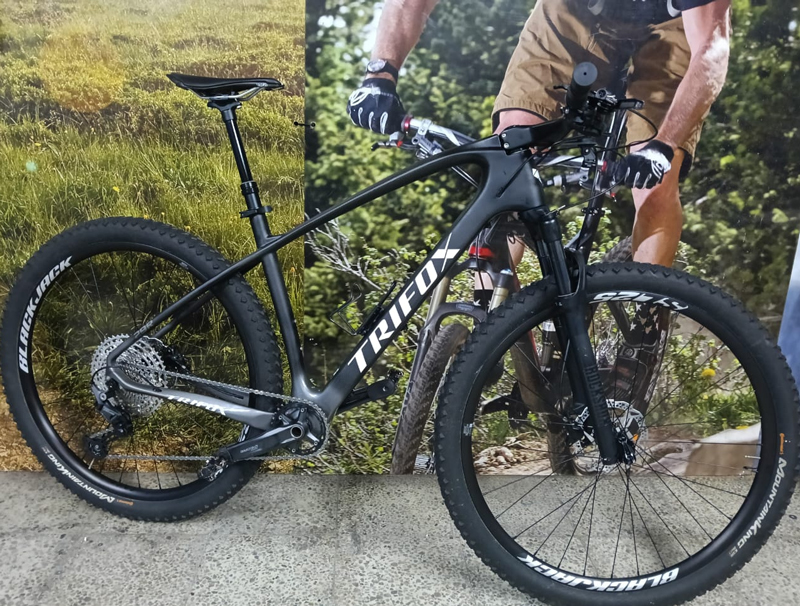
Mountain biking is more than just an adrenaline-pumping adventure—it’s also an incredible full-body workout. Whether you're navigating rocky trails, climbing steep hills, or speeding through forest paths, mountain biking challenges your body in ways that few other activities can. But is it really a good workout? Let’s break it down.
Cardiovascular Benefits
Mountain biking is an excellent cardio exercise. The constant pedaling, combined with the need to adapt to changing terrain, keeps your heart rate elevated. This improves cardiovascular health, boosts endurance, and burns calories—up to 500-600 calories per hour, depending on intensity.
Strength and Muscle Building
Unlike road cycling, mountain biking requires you to engage your entire body. Your legs power the pedals, your core stabilizes you on uneven terrain, and your arms and shoulders work to control the handlebars. Uphill climbs build lower-body strength, while technical descents and obstacles improve balance and coordination.
Mental Health Benefits
Mountain biking isn't just a physical workout—it’s a mental one too. Navigating trails requires focus, quick decision-making, and problem-solving skills. Plus, spending time in nature has been shown to reduce stress, improve mood, and boost overall mental well-being.
Low-Impact Exercise
For those looking for a joint-friendly workout, mountain biking is a great option. The suspension on mountain bikes absorbs much of the impact, making it easier on your knees and ankles compared to high-impact activities like running.
Getting Started
If you’re new to mountain biking, start with beginner-friendly trails and invest in a reliable bike like those from Trifox Bike. Their range of mountain bikes offers durability and performance, perfect for tackling any trail.
In conclusion, mountain biking is not only a good workout—it’s a fun, versatile, and rewarding way to stay fit. Whether you’re looking to improve your fitness, explore the outdoors, or challenge yourself, hitting the trails might just be the perfect solution.
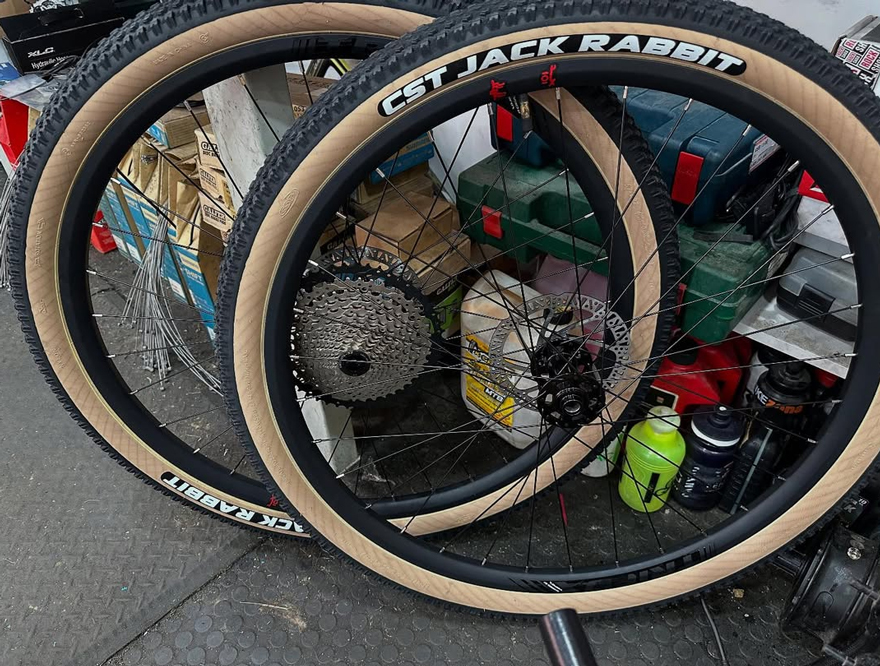
When it comes to choosing the right bike rims, one of the key decisions you’ll face is whether to go with hooked or hookless designs. Both options have their pros and cons, and the best choice depends on your riding style, tire preferences, and performance goals. Let’s break down the differences to help you decide which rim type is right for you.
What Are Hooked Rims?
Hooked rims feature a small lip or "hook" on the inner edge of the rim bed. This hook helps secure the tire bead in place, preventing it from slipping off under high pressure or during aggressive cornering. Hooked rims are the traditional design and are compatible with a wide range of clincher tires, making them a versatile choice for most cyclists.
What Are Hookless Rims?
Hookless rims, as the name suggests, lack the hooked lip. Instead, they have a straight, flat rim bed. This design relies on a precise fit between the tire and rim to keep the tire securely in place. Hookless rims are often lighter and stronger due to their simpler construction, but they require specific tires that are designed to work with hookless systems.
Key Differences
1. Tire Compatibility: Hooked rims work with most clincher tires, while hookless rims require tubeless tires specifically designed for hookless use.
2. Weight: Hookless rims are typically lighter, which can be a significant advantage for weight-conscious riders.
3. Durability: Hookless rims are often stronger and less prone to damage because they lack the stress points created by the hook.
4. Ease of Use: Hooked rims are generally easier to set up and maintain, especially for riders who frequently switch tires.
Which Is Right for You?
-Hooked Rims: Ideal for riders who value versatility, use a variety of tires, or prefer a more traditional setup. They’re also a safer choice for high-pressure applications.
-Hookless Rims: Best for performance-oriented cyclists who prioritize weight savings and strength. They’re particularly popular in mountain biking and gravel riding, where tubeless setups are common.
Ultimately, the choice between hooked and hookless rims comes down to your specific needs and preferences. If you’re unsure, consult with a bike specialist or consider the type of riding you do most often. Both designs have their place in the cycling world, and choosing the right one can enhance your ride quality and overall experience.
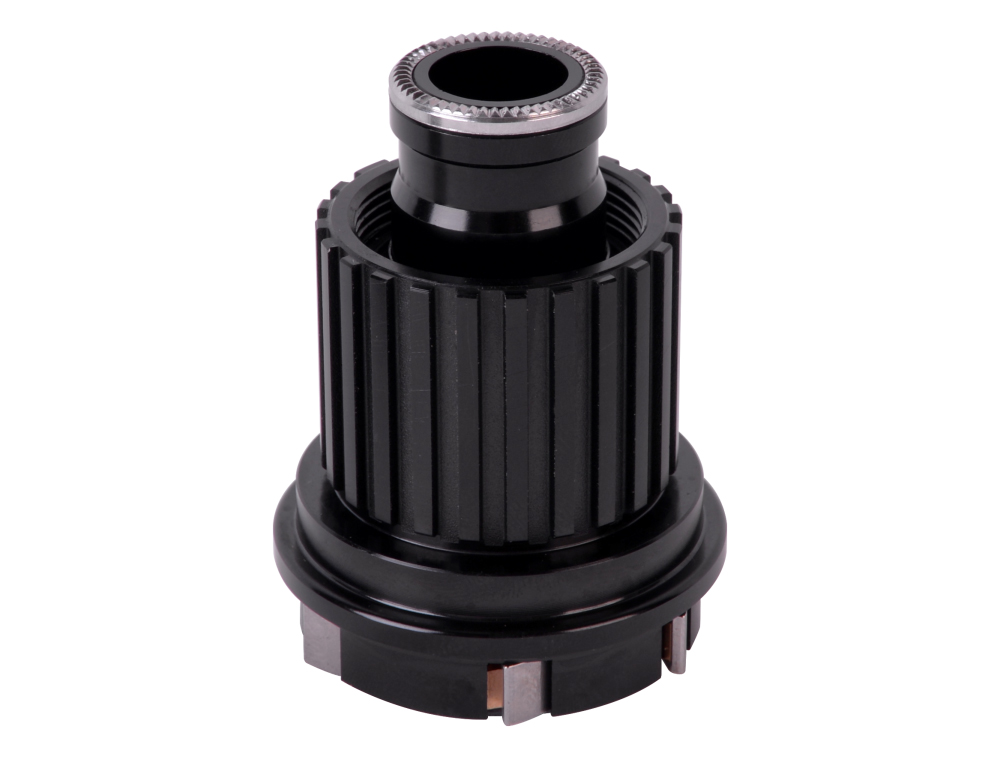
If you're a cycling enthusiast, you’ve probably heard the term "freehub" thrown around, but what exactly is it, and why does it matter for your ride? The freehub is a critical component of your bike’s rear wheel, responsible for allowing the wheel to spin freely when you stop pedaling while still engaging the drivetrain when you pedal forward. Understanding how it works and its impact on your ride can help you make informed decisions about maintenance and upgrades.
What Is a Freehub?
The freehub is the mechanism located at the center of your bike’s rear wheel hub. It consists of a splined body that holds the cassette (the cluster of gears) and an internal ratcheting system that allows the wheel to spin independently of the pedals when coasting. When you pedal, the ratchet engages, transferring power from the chain to the wheel and propelling you forward.
How Does It Work?
Inside the freehub, a set of pawls (small spring-loaded teeth) interact with a ratchet ring. When you pedal, the pawls lock into the ratchet ring, driving the wheel. When you stop pedaling, the pawls disengage, allowing the wheel to spin freely without moving the pedals. This seamless transition is what makes modern cycling so efficient and enjoyable.
Impact on Your Ride
1. Smooth Coasting: A well-functioning freehub ensures smooth coasting, allowing you to rest without losing momentum.
2. Power Transfer: High-quality freehubs with precise engagement points improve power transfer, making your pedaling more efficient.
3. Durability: The materials and design of the freehub affect its longevity. Premium models, like those from Trifox Bike, are built to withstand heavy use and harsh conditions.
4. Maintenance: Regular cleaning and lubrication of the freehub are essential to prevent wear and ensure consistent performance.
Choosing the Right Freehub
When selecting a freehub, consider compatibility with your drivetrain, the number of pawls (more pawls mean faster engagement), and the material (steel or titanium for durability). Upgrading to a high-performance freehub, like those offered by Trifox Bike, can significantly enhance your riding experience.
In conclusion, the freehub is a small but mighty component that plays a crucial role in your bike’s performance. By understanding its function and maintaining it properly, you can enjoy smoother, more efficient rides for years to come.

Gear skipping, also known as missed shifts or gear slippage, is a frustrating issue that many drivers experience, particularly in manual transmission vehicles. It occurs when the transmission fails to engage properly, causing the gears to "skip" or pop out of place. This can lead to a loss of power, increased wear on the transmission, and even potential safety hazards. But what causes gear skipping, and how can it be prevented? Let’s dive into the reasons behind this common problem.
1. Worn Synchros or Gears
One of the most common causes of gear skipping is wear and tear on the synchronizers (synchros) or gears themselves. Synchros are responsible for matching the speed of the gears during shifts, ensuring smooth engagement. Over time, these components can wear down, especially if the vehicle is driven aggressively or maintained poorly. When synchros or gears are damaged, they struggle to align properly, leading to skipped gears.
2. Improper Shifting Technique
In manual vehicles, driver error can also contribute to gear skipping. For example, failing to fully depress the clutch pedal or shifting too quickly can prevent the gears from engaging correctly. Additionally, "riding the clutch" (keeping the clutch partially engaged) or forcing the shifter into gear can accelerate wear and lead to skipping.
3. Low or Contaminated Transmission Fluid
Transmission fluid plays a critical role in lubricating and cooling the gears and synchros. If the fluid level is low or the fluid is contaminated with debris, it can hinder proper gear engagement. Over time, old or dirty fluid loses its effectiveness, increasing friction and wear on transmission components.
4. Loose or Damaged Linkage
The shift linkage connects the gear shifter to the transmission. If this linkage becomes loose, misaligned, or damaged, it may not fully engage the gears, causing them to skip. This issue is more common in older vehicles or those with high mileage.
5. Clutch Problems
A failing clutch can also lead to gear skipping. If the clutch doesn’t fully disengage when the pedal is pressed, it can cause grinding or difficulty shifting. Similarly, a worn clutch may not provide enough friction to keep the gears engaged, resulting in slippage.
How to Prevent Gear Skipping
To avoid gear skipping, regular maintenance is key. Ensure your transmission fluid is checked and replaced according to the manufacturer’s recommendations. Practice proper shifting techniques, and avoid aggressive driving habits. If you notice signs of gear skipping, such as difficulty shifting or unusual noises, have your vehicle inspected by a professional mechanic promptly. Addressing the issue early can prevent costly repairs down the line.
In conclusion, gear skipping is often a symptom of underlying mechanical issues or driver error. By understanding the causes and taking proactive steps to maintain your vehicle, you can keep your transmission running smoothly and avoid the frustration of missed shifts.

























































